Imagine the thrill of swimming alongside a whale shark and witnessing these gentle giants up close. You can make this experience a reality! These friendly creatures are the largest fish in the ocean and are known for their gentle nature and enormous size. Destinations around the world offer opportunities to swim with whale sharks in their natural habitats. However, it is important to swim responsibly and choose operators and their whale shark tours carefully in order to protect these marine beautiful animals.
Start preparing for this bucket list worthy activity here!
A Little Bit About Whale Sharks
Whale sharks are the largest fish on Earth, defying expectations with their astonishing size and grace. They can be found in warm tropical waters and subtropical oceans around the world.
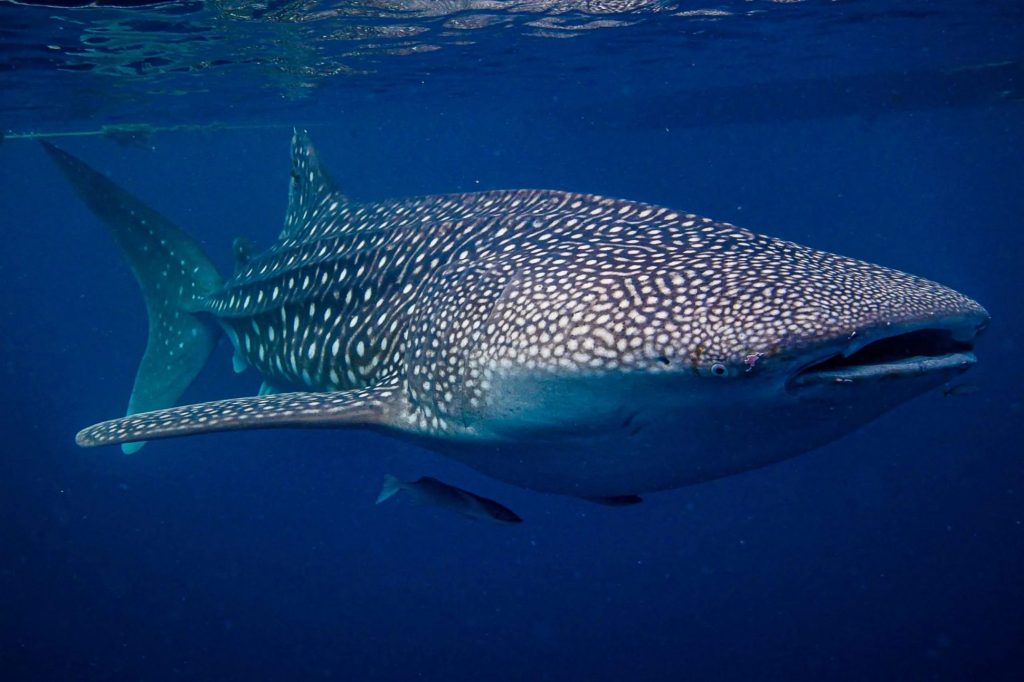
Despite their imposing size, whale sharks are gentle filter feeders. They primarily consume plankton, krill, and small fish, which they filter through their massive gaping mouths that contain tiny teeth. These fascinating creatures can grow to astonishing lengths, reaching up to 12 metres or more. To put their immense size into perspective, a fully grown adult whale shark can be as long as a double-decker bus.
It’s worth noting that despite their name, whale sharks are not actually whales. They are, in fact, a species of massive fish belonging to the family Rhincodontidae. As the largest living fish, whale sharks pose no significant threat to humans. Their docile nature and peaceful demeanour make them a sought-after companion for underwater adventurers.
Whale sharks have the potential to live up to an estimated 70-100 years, making them some of the longest-lived creatures in the ocean. This impressive longevity is just one of the many factors that contribute to their unique charm and allure.
Where to Swim with Whale Sharks
Timing is crucial when it comes to whale shark swimming. Each destination has its own peak whale shark season when plankton blooms and feeding patterns attract these gentle giants. Whether you’re exploring the warm waters of Isla Holbox, the stunning reefs of Ningaloo, or the tranquil beauty of Tofo Beach, planning your visit during these prime months will increase your chances of sharing the water with these magnificent creatures and creating memories that will last a lifetime.
Cenderawasih Bay and Raja Ampat, Indonesia
Cenderawasih Bay and neighbouring Raja Ampat in Indonesia are famous for its unique interactions between West Papau whale sharks and local fishermen. Here, whale sharks are attracted to fishing platforms, known as “bagans,” where they feed on the discarded catch. This location offers a distinctive whale shark experience where you can witness their interactions with local communities.
The Teluk Cendrawasih National Park is the largest marine park in Indonesia and contains a whale sharks research centre. At Kraken, we offer many trips to this area where guests will be able to swim with the whale sharks as long as the creatures allow.
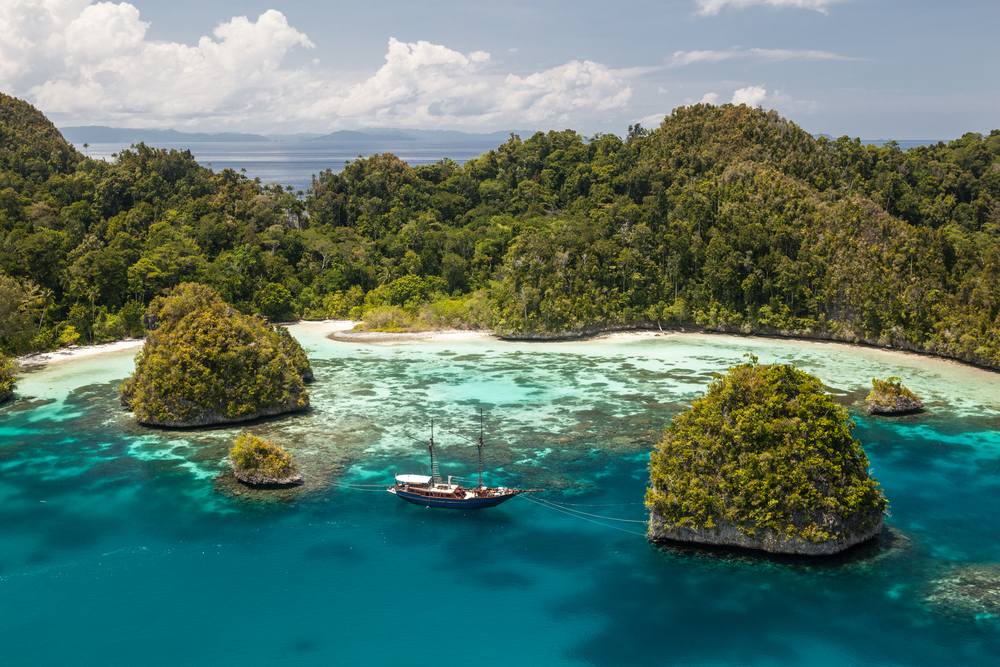
Best time to go: Cenderawasih Bay in Indonesia offers a unique opportunity to swim with whale sharks year-round. This is one of the only places in the world where you can do so.
Sumbawa, Indonesia
Nestled within the Indonesian archipelago, Sumbawa offers a unique opportunity to witness these gentle giants in their natural habitat. Unlike some locations, Sumbawa relies on its nutrient-rich waters to attract whale sharks. The area serves as a feeding ground, creating an awe-inspiring spectacle for those fortunate enough to witness it. Sumbawa’s commitment to responsible ecotourism ensures a respectful encounter with these creatures and their pristine marine landscapes.
Best time to go: For the best experience, plan your visit between April and October. During this period, plankton blooms flourish, drawing whale sharks to the area. This seasonal window provides an extraordinary chance to witness these majestic beings in their natural habitat.
Ningaloo Reef, Western Australia
Ningaloo Reef is a UNESCO World Heritage Site renowned for its vibrant coral reefs and diverse marine life like sea turtles and manta rays. Located off the coast of Western Australia, Ningaloo Reef is one of the world’s most reliable locations to swim and scuba dive with whale sharks. Visitors have the opportunity to join guided tours that offer snorkelling and diving experiences, allowing them to swim alongside these magnificent creatures in their natural habitat.
Best time to go: Ningaloo Reef is a prime location to encounter whale sharks between March and August. This period corresponds with the reef’s annual whale shark migration. As the reef’s waters become rich with plankton blooms, whale sharks gather to feast on this abundant food source. During these months, the chances of encountering these gentle giants are at their peak, and guided tours offer the opportunity to snorkel or dive alongside them.
Isla Holbox, Mexico
Situated on Mexico’s Yucatan Peninsula, Isla Holbox is a hidden gem for whale shark enthusiasts. The waters surrounding Isla Holbox and the nearby Isla Mujeres are known to attract large gatherings of whale sharks between June and September. This period marks the peak of plankton blooms, offering an abundant food source for whale sharks. Tour operators offer responsible eco-tours that adhere to guidelines for safe and respectful interactions, providing a unique chance to share the water with these majestic beings.
Best time to go: Isla Holbox, a picturesque island off Mexico’s Yucatan Peninsula, becomes a hub of whale shark activity between June and September. This window coincides with the region’s plankton blooms, drawing these massive creatures to the area for a feeding frenzy. Guided eco-tours provide an ethically responsible way to witness and swim with whale sharks during their peak season.
Maldives
The Maldives, a tropical paradise of coral atolls and azure waters, offers a luxurious setting for encountering whale sharks. These gentle giants can be found throughout the Maldivian waters, particularly from November to April when the monsoon season brings nutrient-rich currents and plankton blooms. Resorts and liveaboard operators provide snorkelling and diving packages that include the chance to swim with whale sharks while enjoying the splendour of the Maldives’ marine ecosystems.
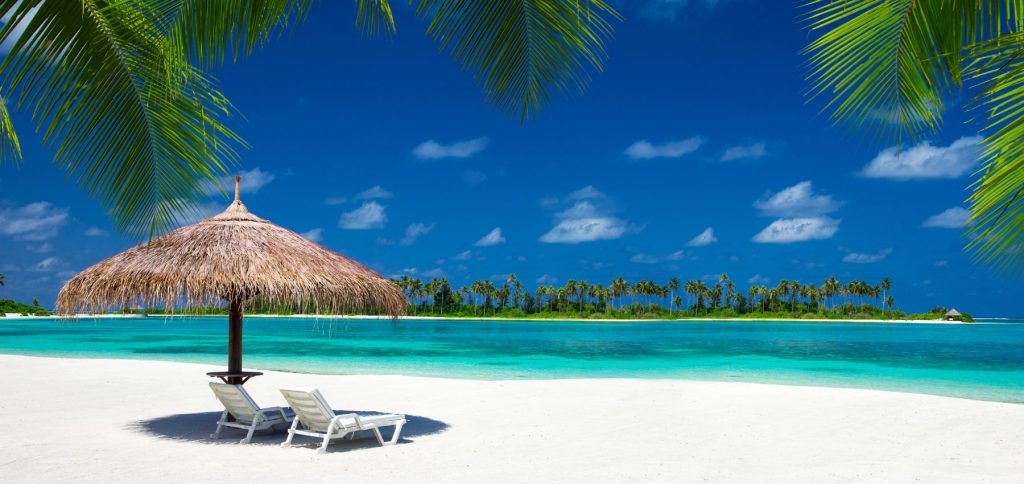
Best time to go: The Maldives, a tropical paradise, presents an enticing opportunity to swim with whale sharks from November to April. During these months, the monsoon season brings nutrient-rich currents and plankton blooms to the Maldivian waters. This abundance of food attracts the whale sharks, providing a high likelihood of encounters during snorkelling and scuba diving excursions.
Tofo Beach, Mozambique
Tofo Beach in Mozambique has gained recognition as a burgeoning whale shark hotspot. Tofo Beach offers a more off-the-beaten-path experience compared to some of the more well-known locations. It is an ideal destination for adventurers seeking a unique and less crowded encounter with these gentle giants.
Best time to go: Between October and April, whale sharks gather in the area to feed on the rich bounty of plankton. This period aligns with the plankton-rich season when they gather to feast. The warm waters of the Indian Ocean make Tofo Beach an ideal destination for those seeking a unique and less crowded whale shark diving and swimming experience.
Utila, Honduras
Utila, part of the Bay Islands of Honduras, is another hidden gem for whale shark enthusiasts. Utila offers a laid-back and intimate atmosphere, providing a tranquil setting for swimmers and divers to engage with these magnificent creatures.
Best time to go: Utila, part of the Bay Islands of Honduras, offers whale shark encounters year-round. However, the highest concentration of sightings occurs between March and April. During these months, the waters around Utila become a hotspot for these majestic creatures as they gather to feed on plankton and small fish.
Galapagos Islands, Ecuador
The Galapagos Islands in the Pacific Ocean, famous for their unique wildlife and contributions to Charles Darwin’s theory of evolution, also offer the chance to swim with whale sharks. The Galapagos’ protected status ensures that interactions with whale sharks adhere to strict conservation guidelines, allowing visitors to witness these creatures in an ecologically sensitive manner.
Best time to go: The peak months for encountering whale sharks are typically from July to November. During these months, the nutrient-rich waters attract plankton blooms, which in turn attract these gentle giants as they feed on the abundant food source. The higher concentration of plankton increases the chances of encountering whale sharks.
Koh Tao, Thailand
Koh Tao, a picturesque island in the Gulf of Thailand, is emerging as a destination for whale shark encounters. The island’s laid-back atmosphere and vibrant marine life make it an appealing destination for underwater adventurers.
Best time to go: Koh Tao, a renowned diving destination in Thailand, offers opportunities to swim with whale sharks between March and April, and again from September to October. While encounters are less predictable compared to some other destinations, these months generally provide higher chances of encountering these majestic creatures.
Mafia Island, Tanzania
Mafia Island, off the coast of Tanzania, is a lesser-known but captivating destination for whale shark encounters. Conservation efforts are strong in this region, ensuring that encounters are conducted responsibly and with a focus on sustainability.
Best time to go: The best time to visit is from November to February when the whale sharks are drawn to the island’s waters by an abundance of plankton.
Whale Shark Swimming Responsibly
An important part of swimming with whale sharks is to do so responsibly. It shows respect and helps to protect this endangered species.
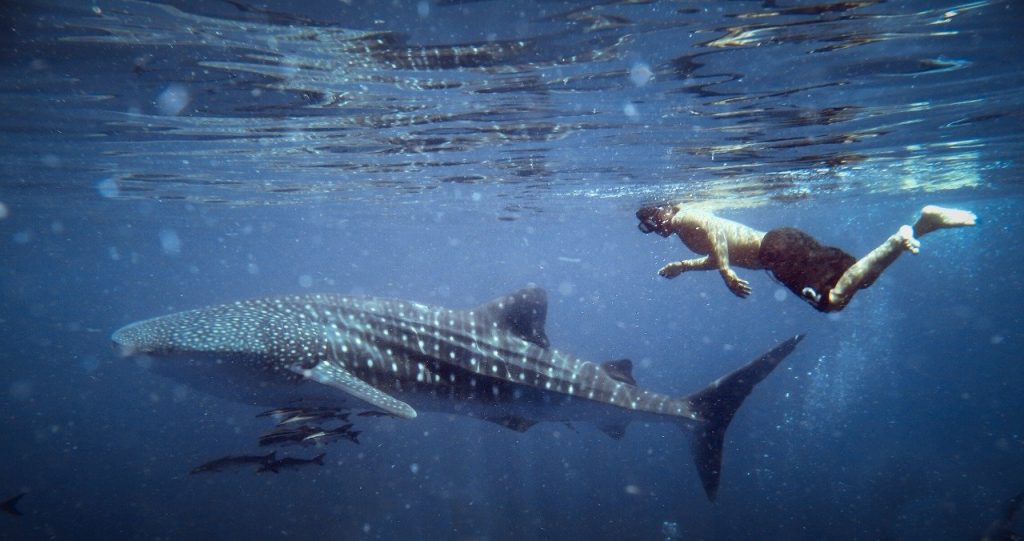
Educate Yourself
Take the time to research and understand the natural behaviours, habitats, and ecological importance of whale sharks. Learn about their migration patterns, feeding habits, and conservation status. By gaining knowledge, you’ll be better equipped to appreciate their role in the marine ecosystem and make informed decisions during your encounters.
Choose Ethical Operators
Prioritise tour operators with a strong commitment to responsible wildlife interactions. Look for those who adhere to established guidelines, support conservation efforts, and emphasise education about these creatures. Read reviews, seek recommendations, and ensure that the operators prioritise the well-being of both participants and whale sharks.
Maintain a Safe Distance
Respectful distance is essential to minimise stress for the whale sharks and ensure their natural behaviours are not disrupted. Keep at least several metres away to avoid causing distress and to allow the animals to move freely without feeling threatened.
No Touching
Resist the urge to touch or grab the whale sharks. Their skin is sensitive, and physical contact can disturb their protective mucous layer, making them vulnerable to infections. Admire these creatures from a distance to ensure their health and well-being.
Passive Observation
Approach whale sharks calmly and quietly. Sudden movements, splashes, and excessive noise can startle and stress them. Maintain a calm demeanour to create a peaceful environment for both you and the whale sharks.
Pay attention to your fin movements to avoid accidentally kicking the whale sharks or other swimmers. Keep your fins tucked in and use gentle, controlled kicks.
No Flash Photography
Flash photography can be harmful to whale sharks by disorienting them and disrupting their natural behaviours. Opt for natural lighting or specialised underwater photography equipment that doesn’t use flash to capture memorable moments responsibly.
Respect Feeding Behaviour
If you encounter whale sharks feeding, maintain a safe and respectful distance. Avoid positioning yourself between the whale sharks and their food source. Let them carry on with their feeding activities without interference. Do not feed them anything yourself.
Follow Regulations
Abide by local regulations and guidelines set by tour operators and authorities. These rules are designed to protect both you and the whale sharks, ensuring safe and respectful interactions that minimise the impact on their environment.
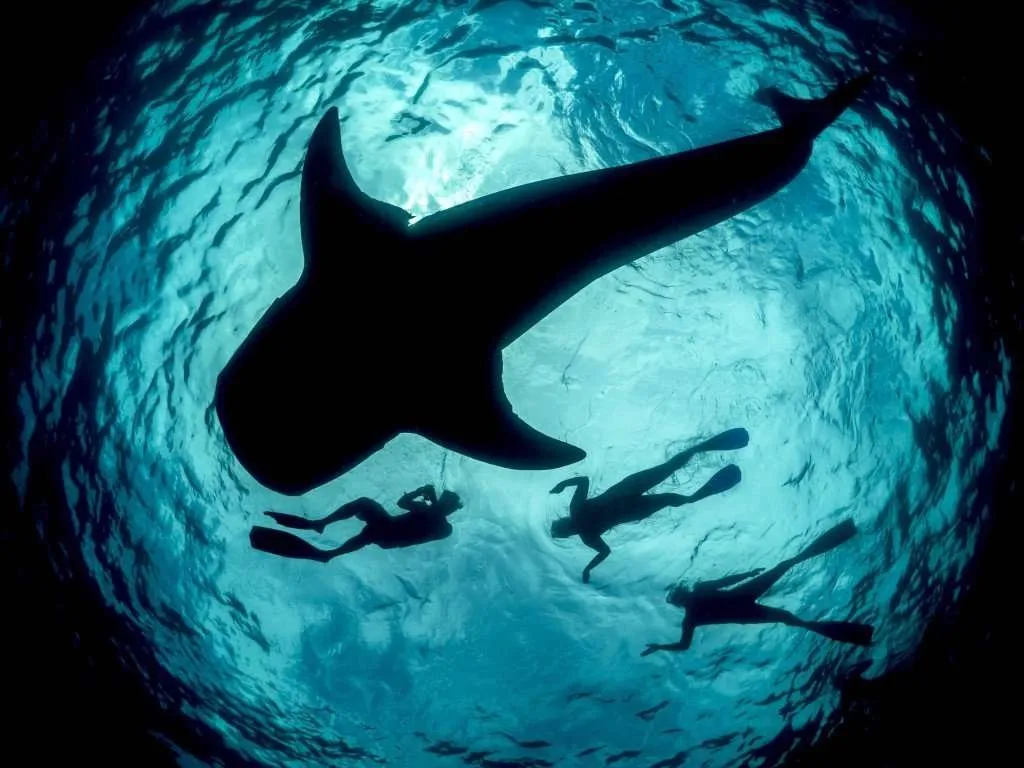
Positioning
Communicate with fellow swimmers and photographers to avoid crowding the whale sharks. This prevents stress for the animals and ensures a safer and more enjoyable experience for everyone.
Position yourself slightly below the whale shark for a more dynamic and captivating perspective. Avoid swimming directly above them, as this can cause shadows and potentially startle the animals.
Are There Guaranteed Sightings?
While many tour operators strive to provide opportunities for whale shark encounters, it’s important to note that these are wild animals, and sightings cannot be guaranteed. Whale sharks follow natural migratory patterns and feeding behaviours, which can be influenced by various factors, including ocean currents and water temperatures. However, many reputable tour operators offer specific trips and packages designed to maximise the chances of encountering these gentle giants.
Whale Shark Conservation
The transformation from hunting to conservation for whale sharks stands as a remarkable global achievement. Once targeted for their valuable fins and body parts, they faced a troubling decline in numbers. However, through heightened awareness and dedicated efforts, a shift in public perception has emerged, leading to vital protections for these gentle giants.
At Kraken Travel, we partner with local communities to transform them from fishermen into passionate conservationists and ecotourism champions. We recruit locals as expert guides and establish ecotourism ecosystems that provide alternative income from which the entire community can benefit.
Whale sharks are the biggest fish in the ocean and swimming alongside them offers a profound and unforgettable experience. As a responsible tourist you not only show respect to these magnificent creatures, you also do your part in the ongoing efforts to protect these giants of the sea.

















